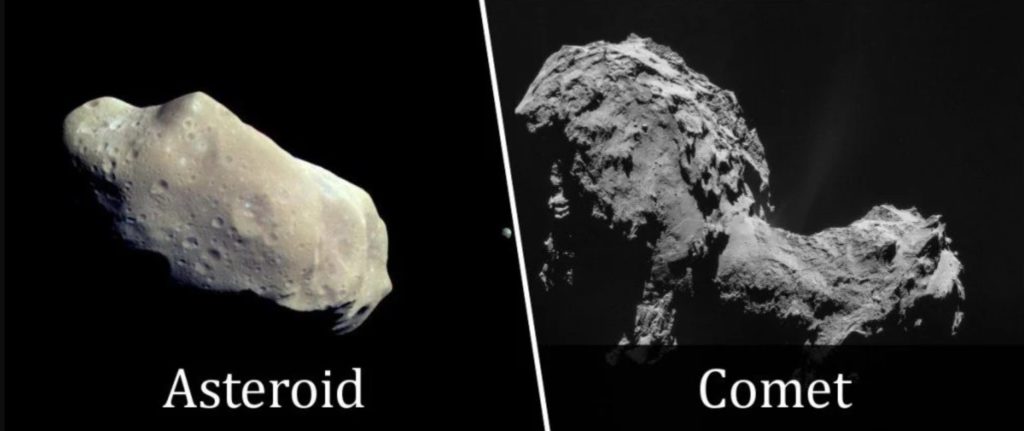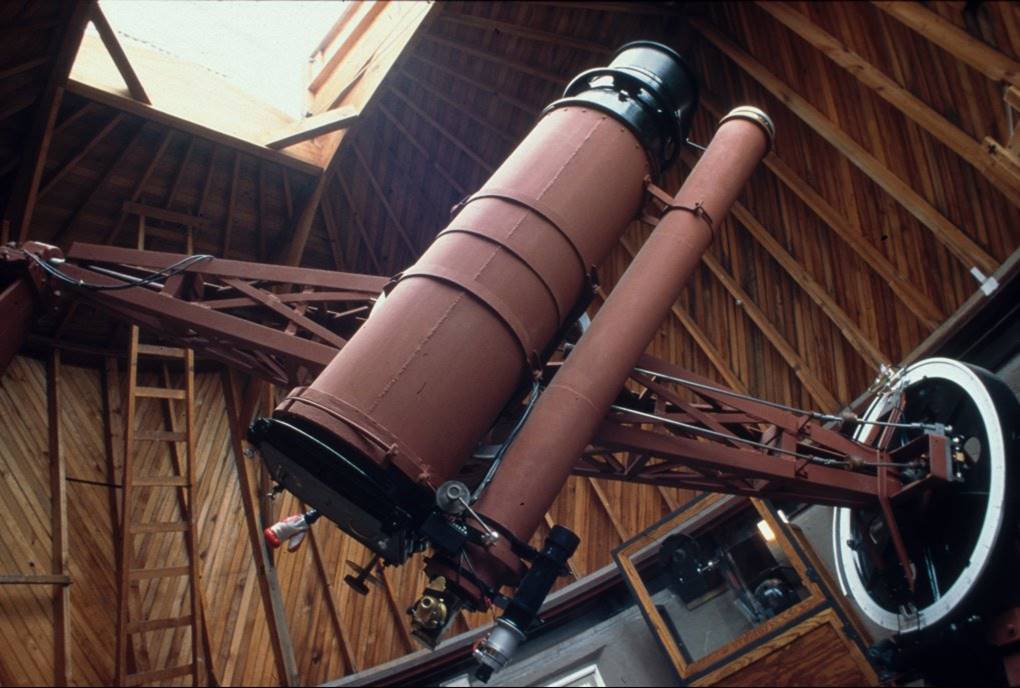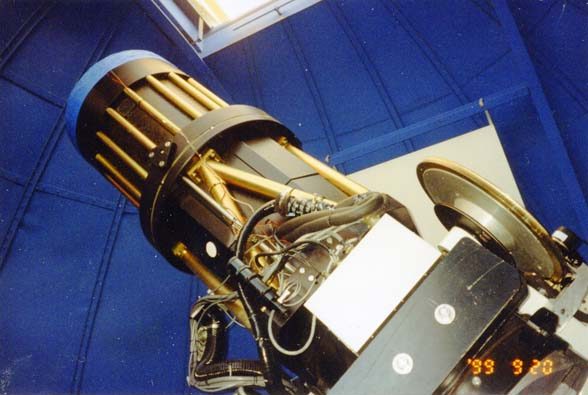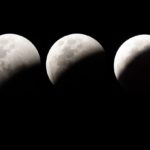
Asteroid Day 2022: Looking Back on Lowell’s Impact
By Claire Gibson, Lowell Educator
Asteroid Day is on June 30, and Lowell Observatory has a rich history of asteroid discovery. Starting in 1905 to the early 2000s, Lowell Observatory has discovered over 30,000 asteroids and 40+ comets, including some notable discoveries such as minor planets and the first binary Trans-Neptunian Object (TNO).
First, let’s break down the differences between a comet, an asteroid, and a meteor.
A comet is a small object in the solar system made of ice, dust, and gas. When a comet’s orbit brings it close to the Sun, it begins to warm up, forcing dust and gas to leave the surface in a process called outgassing. This is where we can get the famous “tail” of a comet!
An asteroid is another small planetary body in the solar system–usually smaller than 600 miles in diameter. Most of the asteroids in the solar system are in between the orbits of Mars and Jupiter in a region known as the asteroid belt. Some asteroids migrate closer to Earth, and we call these Near-Earth Objects (NEOs).
Meteoroids build off of asteroids. In general, meteoroids are just space rocks that range in size from dust grains to an asteroid size. A meteor is when one of these meteoroids falls through Earth’s atmosphere at a high speed and burns up in the atmosphere, causing the “shooting star” appearance in the night sky.

A side-by-side visual comparison of an asteroid and a comet. | WikiMedia Commons
Now that we know the difference between these objects, we can look back in time at Lowell Observatory’s history to see where we have discovered asteroids.
1905
Some of the first asteroids found at Lowell Observatory were discovered by Percival Lowell himself when he was doing the initial search for ‘Planet X’ using photographic glass plates. Of course, at that time Percival was hoping to make the discovery of a new planet in the solar system, so the appearance of asteroids was considered a nuisance rather than a celebrated discovery at the time.
1929
With the construction and first light of the Pluto Camera telescope built to finish the work of Percival and the search for Planet X in 1929, many asteroids were found with this wide field camera. At the time, few observatory facilities had the capability to use wide-field cameras for searching the night sky and confirming the discoveries of asteroids quickly. Clyde Tombaugh, the observer who discovered Pluto, also discovered some asteroids. However, most of the asteroid research that came from the Pluto Camera telescope was done by Henry Giclas, who worked to confirm asteroid discoveries and provide astrometry data for both asteroids and comets.

The Pluto Discovery Telescope, before its restoration in 2017. | Lowell Observatory Archives
1970s – 1998
The business of working to improve observation of the orbits of known asteroids became more streamlined in the 1970s at Lowell Observatory with Ted Bowell using photographic plates. This early work eventually evolved into the LONEOS Program (Lowell Observatory Near-Earth Object Search). This was a collaboration with Lowell Observatory and the Shoemakers, running from 1998 to about 2010. The program turned out to be successful, with the discovery of 200 NEOs (Near Earth Objects–these are the most important objects for astronomers to know about, as they could pose a threat to Earth in the future). Beyond that, many comets and about 30,000 asteroids within the asteroid belt were discovered during the program. Brian Skiff, who is still an active member of the Lowell science team, did considerable observation work for the LONEOS program.

The LONEOS 58cm f/2 telescope. | Schmidt,
20 September 1999 (Courtesy Lowell Observatory Archives)
At the same time as the LONEOS, another project aiming towards looking for Kuiper Belt objects started, called the Deep Ecliptic Survey. The survey used the 4-meter telescope at Kitt Peak Observatory and Cerro Tololo facility in Chile. At the end of this survey, about ⅔ of the known Kuiper Belt objects at that time were discovered with this survey. Larry Wasserman, also an active astronomer at Lowell Observatory today, was part of this program and has been credited with hundreds of discovered objects. Notable discoveries of the Deep Ecliptic Survey include that of minor planets such as 19521 Chaos in 1998, and the first binary Trans-Neptunian Object (TNO) 1998 WW31.
2010 – 2013
The LONEOS program ended in 2010, but asteroid search continued for a little while with the NEAPS program (Near-Earth Asteroid Photometric Survey). Both the LONEOS and NEAPS survey used a 22” Schmidt camera. NEAPS was different from LONEOS in that the focus was taken away from discovery of new asteroids and instead to getting physical properties of known asteroids.
Present
The focus of asteroid research at Lowell has remained at gathering physical data– size, rotation, and composition– thanks to the modern efforts led by Nick Moskovitz with the MANOS program (Mission Accessible Near-Earth Objects Survey).
More posts by Claire
- Views of Pluto: From the Past to the Present
 By Claire Gibson, Lowell Educator 92 years of imaging Pluto have allowed a closer and more detailed look at the cold, small body located over 3.2 billion miles away from Earth. Through time, with new telescopes and space probes, tantalizing glimpses of the intricate surface of the small dwarf planet have been revealed. Let us… Read more: Views of Pluto: From the Past to the Present
By Claire Gibson, Lowell Educator 92 years of imaging Pluto have allowed a closer and more detailed look at the cold, small body located over 3.2 billion miles away from Earth. Through time, with new telescopes and space probes, tantalizing glimpses of the intricate surface of the small dwarf planet have been revealed. Let us… Read more: Views of Pluto: From the Past to the Present - What is a Lunar Eclipse?
 By Claire Gibson, Lowell Educator May 15, 2022 8:29 pm– This year’s first total lunar eclipse will sweep across the Americas, Europe, and Africa. Mark your calendars for the longest lasting totality until 2029 with the May’s “Blood Flower Moon” lunar eclipse. Although the name sounds eerie for May, it is just a trick of… Read more: What is a Lunar Eclipse?
By Claire Gibson, Lowell Educator May 15, 2022 8:29 pm– This year’s first total lunar eclipse will sweep across the Americas, Europe, and Africa. Mark your calendars for the longest lasting totality until 2029 with the May’s “Blood Flower Moon” lunar eclipse. Although the name sounds eerie for May, it is just a trick of… Read more: What is a Lunar Eclipse?